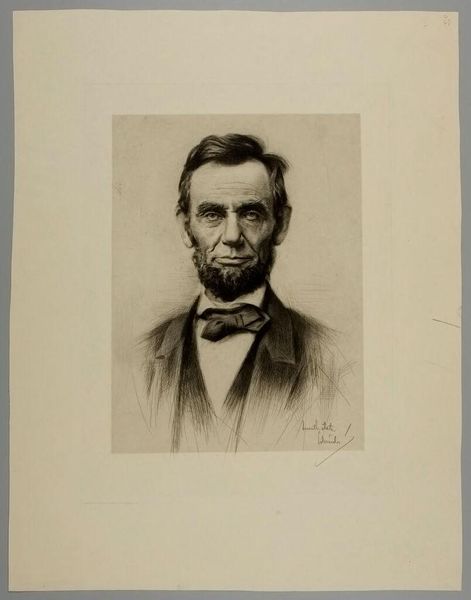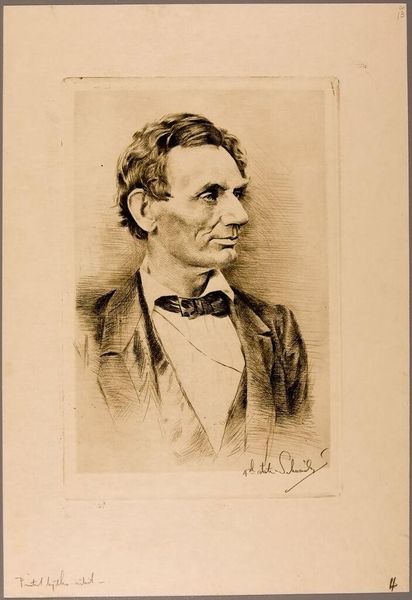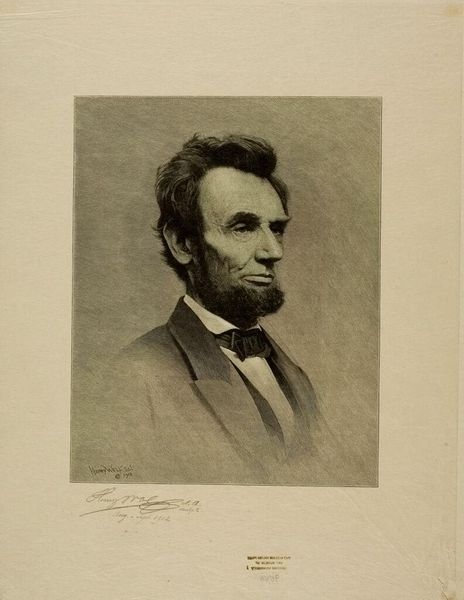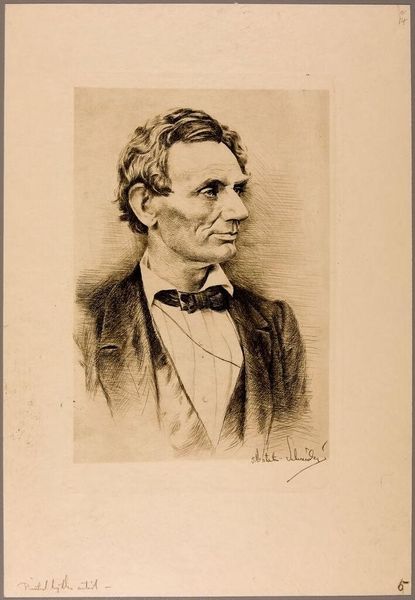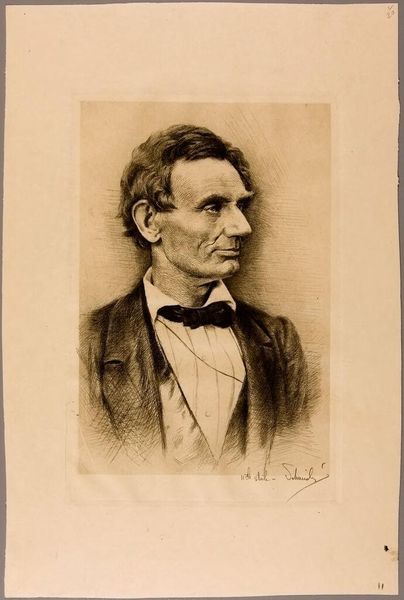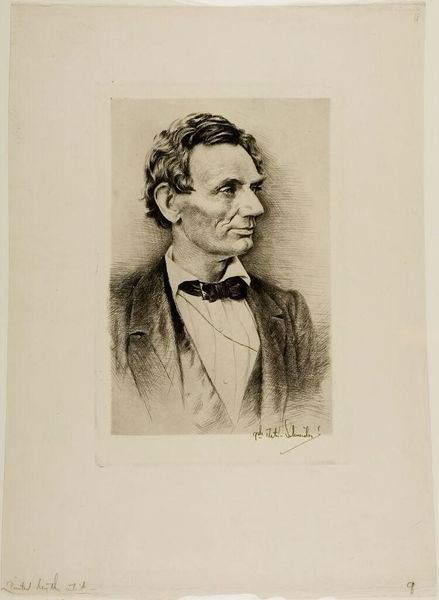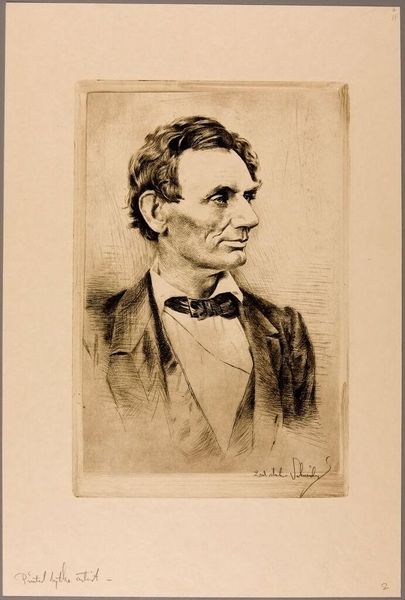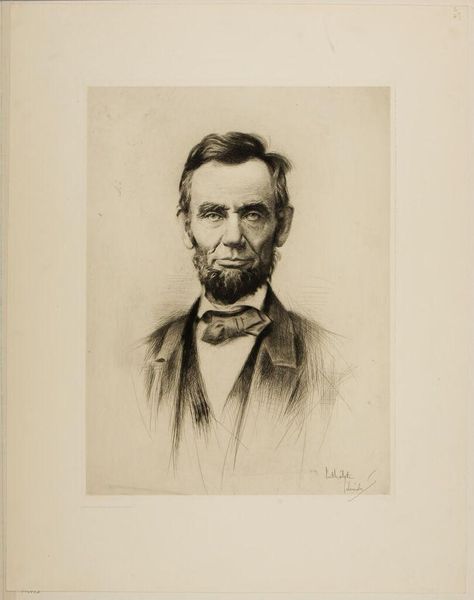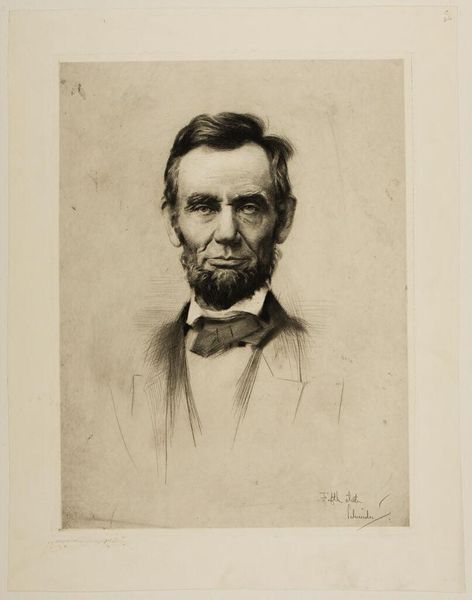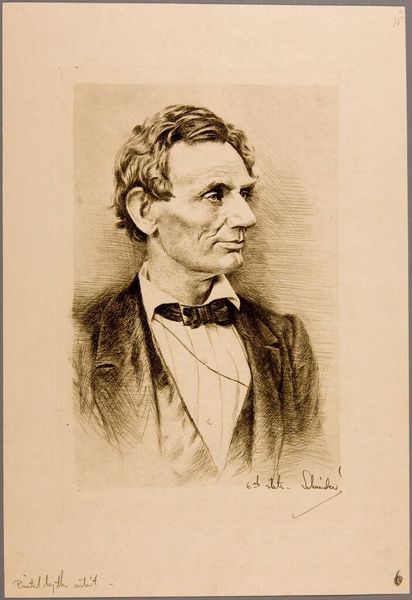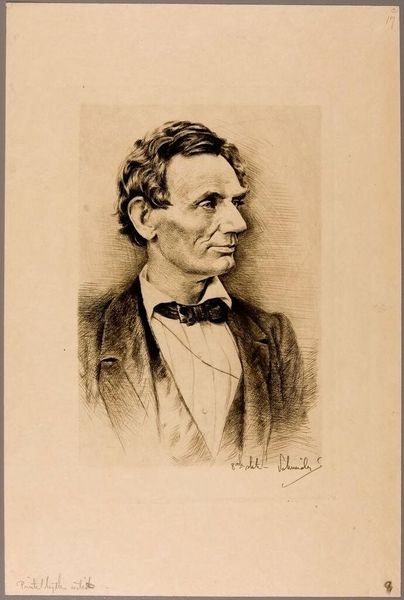
Copyright: CC0 1.0
Curator: This portrait, "Abraham Lincoln (three-quarters)," by Thomas Johnson, now residing at the Harvard Art Museums, immediately strikes me with its somber mood. The hatching and cross-hatching create a real sense of gravitas. Editor: Absolutely. I'm intrigued by the reproductive labor involved in translating Lincoln's image through printmaking. Consider the socio-political implications of mass-producing and distributing this image of leadership. Curator: And look at the paper itself. What kind of pulping and processing went into creating a surface able to hold such fine lines? The quality speaks to a certain level of economic access and investment in materials. Editor: Precisely. It's also interesting to examine the historical context: how did institutions like Harvard come to possess and preserve such portraits, and what role do they play in shaping Lincoln's legacy? Curator: It seems Lincoln’s likeness was not as reproducible as we’d like to think. Johnson was born in 1714 and passed away in 1778, long before Lincoln. Maybe this portrait is of another, earlier Abraham Lincoln? Editor: That's a good point to consider. Regardless, this print prompts a deeper look at both the materiality of image-making and the political forces at play when documenting figures of power.
Comments
No comments
Be the first to comment and join the conversation on the ultimate creative platform.

